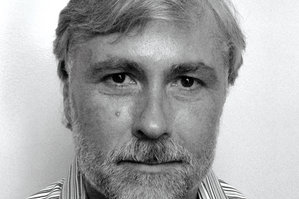Art historian and biographer Justin Spring first discovered the works of Samuel Steward at A Different Light bookstore in San Francisco, in the erotic comedies that followed fictitious hustler Phil Andros. Later, when Spring was researching gay pulp fiction of the 1950s and ’60s — pre-gay liberation — at Brown University, he found Steward’s name in the database archives.
Steward, who wrote under many pen names, had a literary voice that stood out from his peers: Far from describing the self-loathing, deviant homosexual, Steward’s writing was sex-affirmative. Spring became intrigued and sought out more on the writer, sex researcher and tattoo artist.
Several months later, when Spring was writing a book on the artist Paul Cadmus, he uncovered more information on Steward than he ever imagined existed. In the mid-20th century, most artists and writers erased most if not all references to homosexuality in their personal lives, even if they addressed it in their art or writing.
But letters written by Steward, found in the Yale archives, and references to Steward’s contributions to Alfred Kinsey’s Institute for Sex Research had piqued Spring’s interest, leading him to seek out the executor of Steward’s estate. It turns out the executor had a vast stockpile of writings, artwork and photographs from the late writer and artist filling his attic in San Francisco.
Spring immediately got to work sifting through it all. The result of that long process is Spring’s new book, “Secret Historian: The Life and Times of Samuel Steward: Professor, Tattoo Artist and Sexual Renegade.” In the biography, Spring pieces together the extraordinary life of Steward using his writing and artwork.
“It was endless,” Spring said of the decade he poured over Steward’s works. “The different kinds of source materials were spread all over the place. There were a huge number of journals, diaries and material at the Kinsey Institute in Bloomington, Ind. Getting out there is difficult enough. It’s expensive, too. The library there is only open in a very limited way to qualified researchers. Then they don’t allow anyone to do any photocopying, so any kind of notes had to be taken there sitting in the room. I took two weeklong trips to Bloomington just to sit and read in the library.
“But the archives that I got out of the attic in San Francisco were so enormous and filthy that it took me the better part of a year and a half to sort through it all and figure out what was garbage and what was interesting. Everything was in a big mish-mash. I spent a lot of time living by myself in a house out in the country where I had the papers stored and just feeling like it was the end of the world. It was a very long process.”
Steward, who started his career as a poet, short-story writer and novelist, wrote extensively about his sex life at a time when such literary pursuits could get him thrown into jail. Being a tattoo artist and a creator and collector of erotica pushed him further to the fringes of society at the time. But he also wrote nonfiction works, such as “Bad Boys and Tough Tattoos,” on the social history of American tattooing, and “Dear Sammy: Letters from Gertrude Stein and Alice B. Toklas,” on his friendship with the two pioneering feminists.
Spring said that homosexuality and tattooing are far less taboo now than they were in the 1950s.
“I think Sam would be a much happy person today,” he said. “He would be much less isolated and he would be much more in a world that allowed him to feel connected to others. The miracle of Sam’s life is that much of it seems to be a long, dark tunnel in which he was alone having experiences and encounters, but really unable to be at peace with himself or society because of what he cared about and what most interested him was on the borderline of criminal behavior. We laugh at it now because tattooing is so commonplace, but back when Sam was putting them on his own body and the bodies of others, there was a strong feeling that what he was doing was trafficking in human corruption, ruining people’s lives and aligning himself with the criminal class.”
As for what will become of Steward’s uncovered materials, Spring said he’s looking for the right place to them hand over.
“Nothing is going to happen to them until after the book has been well launched,” he said. “There’s talk of possible doing an exhibition with the Museum of Sex in New York. I’m going to put a bunch of the most interesting of the materials that were published but lost into a collection, which also will include his letters to people and papers I found compelling. That book is going to come out later in the fall. The papers themselves are going to go into a library.”
Even with the thrill of discovering a long-hidden voice in gay literature and art, Spring said he’s not so sure he’s looking for similar figures any time soon.
“There are amazing stories that are yet to be told,” he said. “The 10 years of my life that I spent writing Sam’s biography were really important years for me and I’ll never get them back. As far as my curiosity about that period is concerned, I think I’ve come to the end. I could be wrong. Something could turn up tomorrow that could fascinate me just as much. I don’t think so, though. I also think that it might be time for me to take on something a little lighter.”
Justin Spring hosts a reading at 5:30 p.m. Sept. 16 at Giovanni’s Room, 345 S. 12th St. For more information, call (215) 923-2960.
Larry Nichols can be reached at [email protected].
